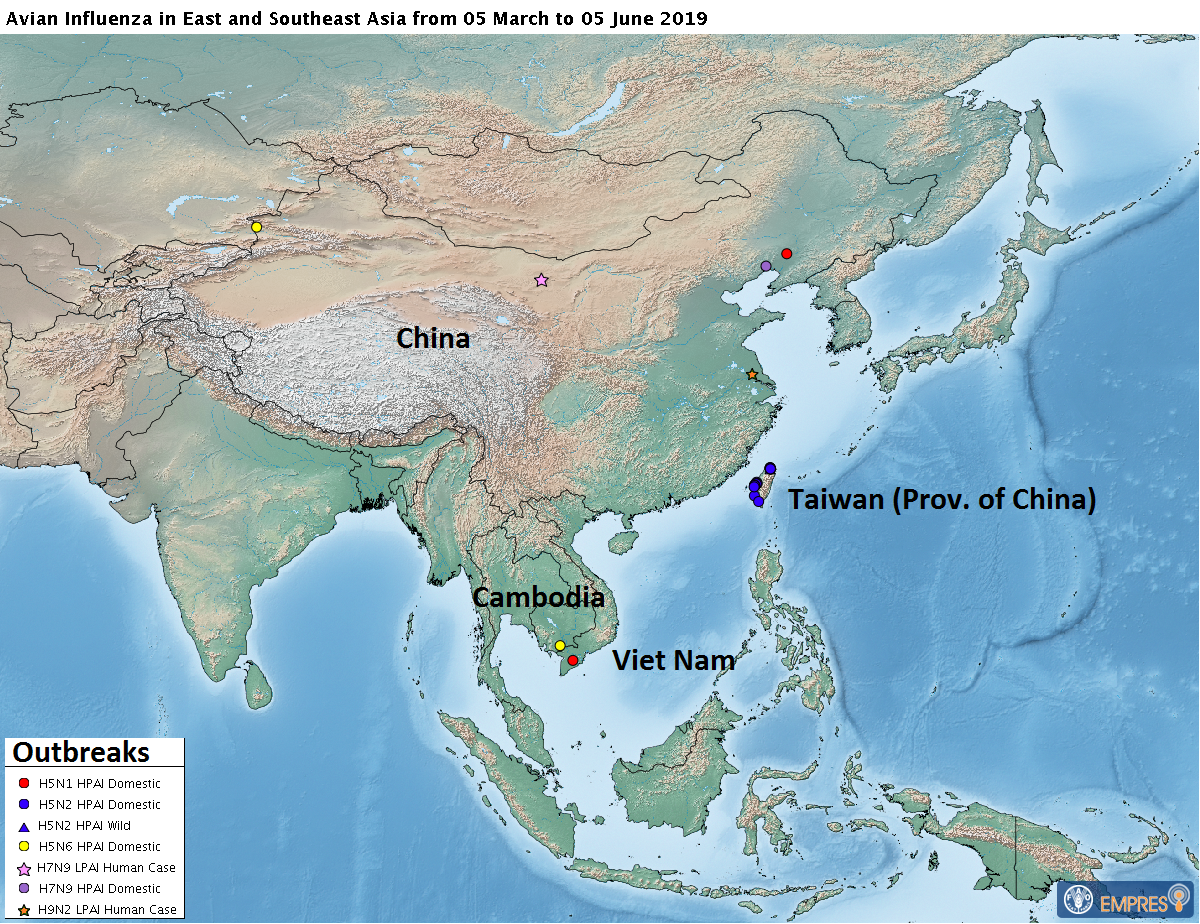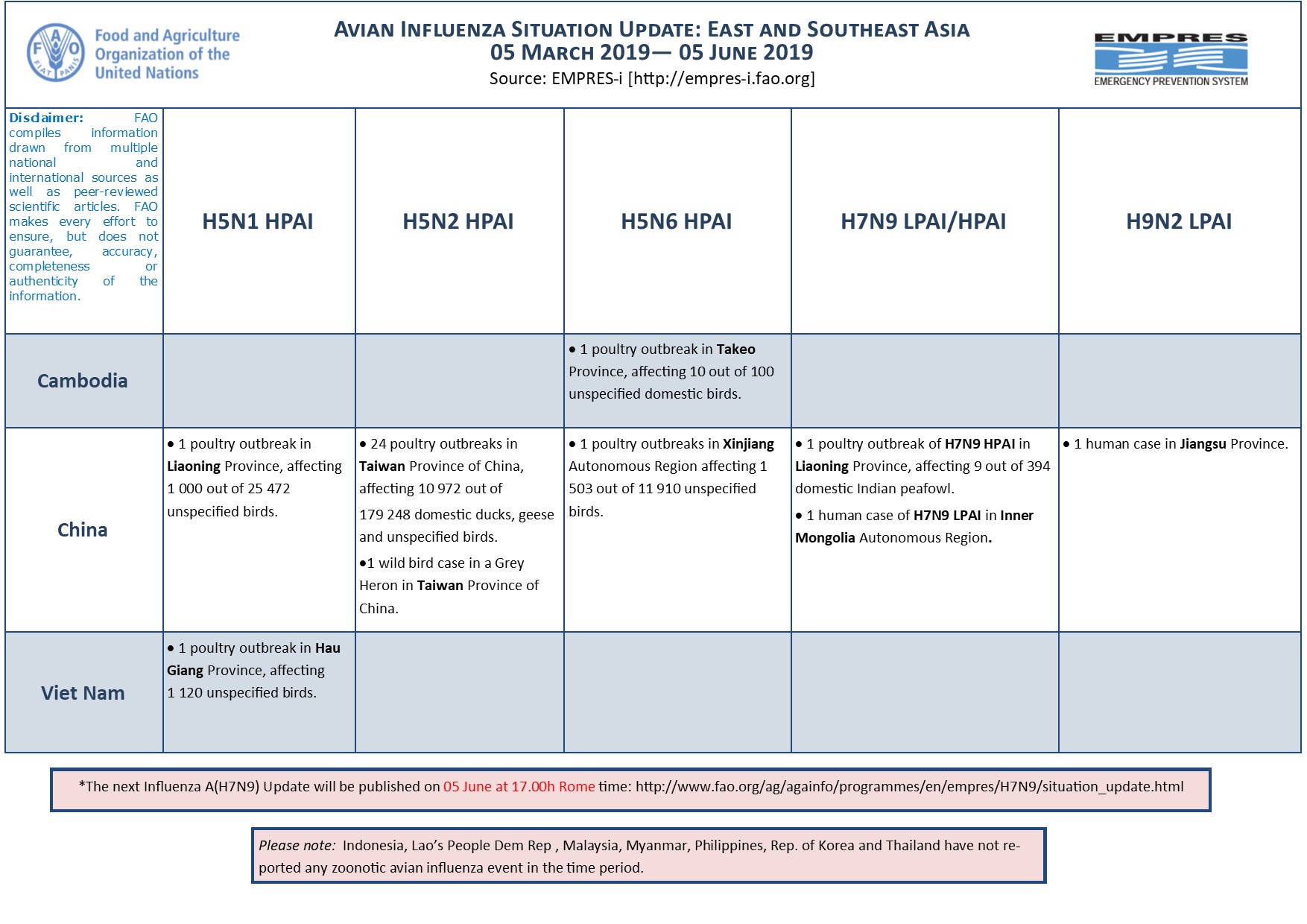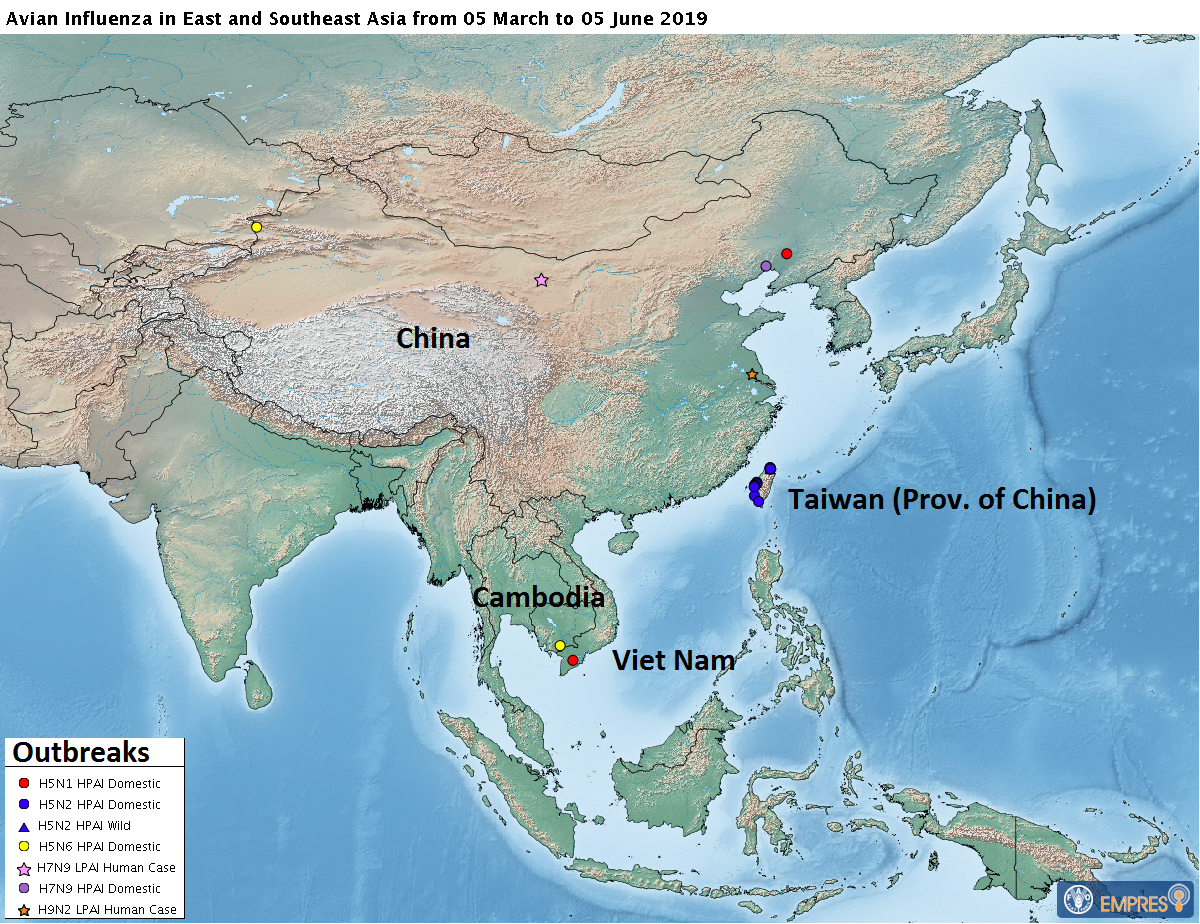FAO/EMPRES-AH is constantly monitoring the avian influenza situation worldwide and compiles information from multiple national and international sources as well as peer-reviewed scientific articles. Close collaboration with country and regional offices, the implementation of avian influenza field surveillance projects and networks of expertise like the OIE/FAO OFFLU (www.offlu.net) provide access to timely information on outbreaks, surveillance findings and genetic similarities of circulating viruses or their virological features. This information is stored in the EMPRES Global Animal Disease Information System (EMPRES-i), a database that can be accessed online at empres-i.fao.org.
During the period 5 March to 5 June 2019, six different avian influenza virus subtypes have been reported in poultry in South-East Asia, of which four were highly pathogenic (H5N1, H5N2, H5N6 and H7N9) and two low pathogenic (H7N9 and H9N2). H5N1 HPAI caused one poultry outbreak in China, and one outbreak affecting unspecified domestic birds in Viet Nam. In Taiwan, Province of China, 24 outbreaks in poultry were confirmed to be caused by H5N2 HPAI affecting a range of domestic species, including ducks and geese. In addition, a Grey Heron tested positive for the virus. H5N6 HPAI caused one outbreak in China, Xinjiang Uygur Autonomous Region, and one outbreak in Cambodia, affecting unspecified domestic birds. In China, two human cases were reported, one caused by H9N2 LPAI in Jiangsu Province and the other by H7N9 LPAI in Inner Mongolia Autonomous Region.
Highly pathogenic H5N1, H5N2 and H5N6 viruses have demonstrated the ability to spread also via migratory water birds.
We consider avian influenza activity to be higher in the period December to March, thus reports of outbreaks in poultry or detections in wild birds and humans are expected to further decrease over the coming months in the region.







